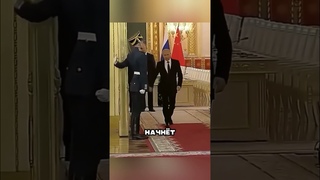Discover the Harmony of Tea and Forms: One Pot, One Set - Master Tu Tengyao
Elbow strikes are a defining element of Wing Chun, an ancient martial art with a legacy of precision and effectiveness. In this comprehensive guide, we’ll delve into the art of elbow striking, exploring its techniques, strengths, and applications.
Wing Chun’s elbow strikes are renowned for their close-quarters combat efficiency. The style’s central principles of simplicity and directness find their ultimate expression in elbow strikes. These techniques are specifically designed for tight spaces, making them ideal for self-defense and real-world situations.
Wing Chun practitioners employ a range of elbow strikes, each tailored to different combat scenarios. Techniques like “Pak Sau“ and “Jut Sau“ blend deflection and counterattack, allowing the fighter to seize the initiative even when the opponent initiates an attack.
The “Fook Sau“ elbow strike, which translates to “subduing hand,“ is a powerful tool for intercepting and neutralizing incoming strikes, providing a rapid and formidable defense.
Wing Chun also includes “Gum Sau“ or “pressing hand,“ which is a skillful method for controlling an opponent’s arms and then delivering powerful elbow strikes when the opportunity arises.
The art’s close-range combat tactics involve short, sharp elbow strikes aimed at the opponent’s vulnerable points. These techniques are fast and powerful, making them formidable in real combat scenarios. The speed and precision of Wing Chun elbow strikes are ideal for quickly disabling an adversary.
What sets Wing Chun elbow strikes apart is the emphasis on proper positioning and structure. Practitioners are trained to maintain a strong, rooted stance while executing these techniques. This stability and balance are essential for generating maximum power.
A vital aspect of Wing Chun’s elbow strikes is the ability to “chain“ techniques together seamlessly. The fluid transition from one elbow strike to another creates an unbroken flow of offensive and defensive movements, leaving the opponent with minimal time to react.
In real-world applications, these elbow strikes can be unleashed with surprising speed, making them a valuable asset in self-defense scenarios. Their effectiveness lies in their ability to deliver focused power to an opponent’s vital areas, incapacitating them swiftly.
To become proficient in Wing Chun elbow strikes, consistent practice, and expert guidance are essential. By mastering these techniques, you not only enhance your self-defense skills but also gain a deep appreciation for the art’s philosophy of simplicity and effectiveness.
In conclusion, Wing Chun’s elbow strikes are a potent arsenal for close-quarters combat. Their speed, precision, and adaptability make them valuable tools in self-defense and martial arts. With dedicated training, one can unlock the full potential of these techniques and experience the true essence of Wing Chun.
Interview 2023 with Master Tu tengyao:
If you want see more videos please leave like and subscribe
#warriorunicorn #tengyao #chinesekungfu
Martial arts, Techniques, Training, History, Self-defense, Fitness, Discipline, Philosophy, Culture, Tradition, Mastery, Strength, Mental toughness, Focus, Self-improvement, Performance, Mindset, Challenge, Confidence, Wellness, Inspiration, Motivation, Perseverance, Dedication, Success, Martial Arts, Mind-Body Connection, Bruce Lee, Physical Abilities, Mental Focus, Well-Being, Tai Chi, Muay Thai, Self-Discovery, Practice, Mindfulness, Wing Chun, training routine, martial arts, physical strength, mental strength, expert instructors, Chinese culture, subscribe, inner strength.























